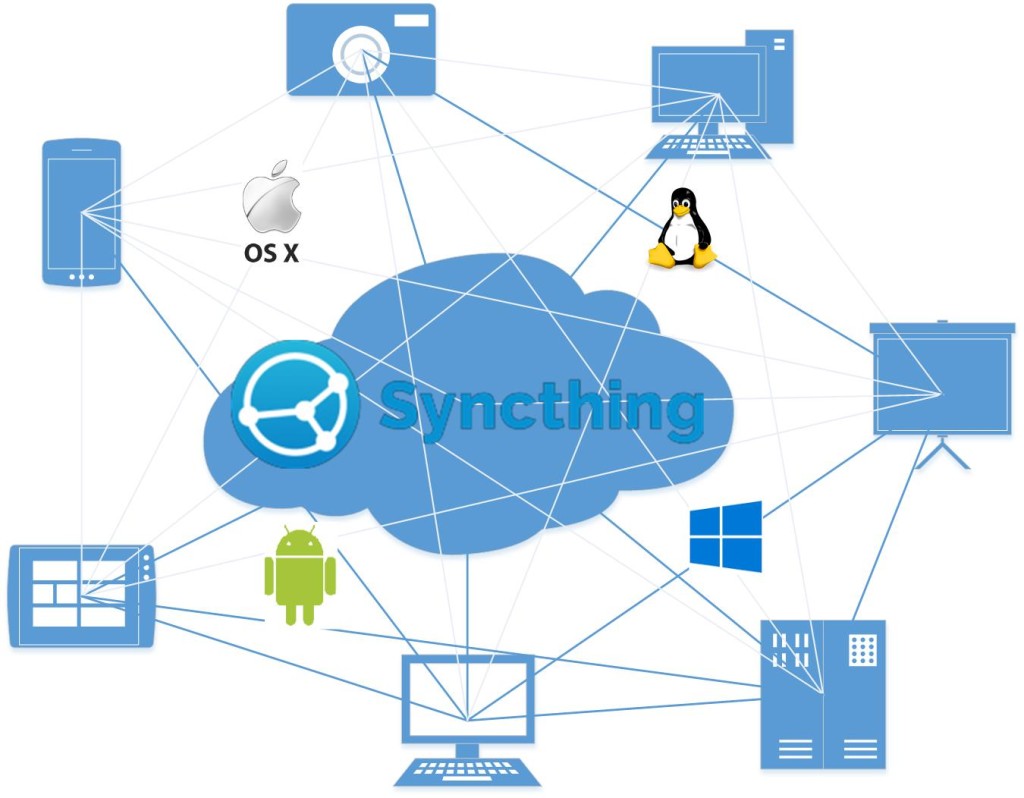

SYNCTHING SERVER HOW TO
We leave the client's set to dynamic on the the server side to prevent the server from making connection unless the client says hello first. Im looking for help on how to install the Syncthing app on my unRAID server. The client knows the server's IPv4 and/or IPv6 address so we do not need global or local discovery nor UPnP. With the config below (client::folder master = yes, server::folder master = no) we prevent the server from accidentally overriding a file on the client. I replaced everything with syncthing, they have clients available for linux, illumos, openbsd and mac. Ofcourse those boxes are not always on and a frenzy of cron mails happen every now and then. I had 2 hosts (1 laptop and 1 desktop) that would get there changes polled from a backup server.
SYNCTHING SERVER FULL
It supports block-level synchronization, which means that if you sync encrypted TrueCrypt containers, only the modified bits and not the full container will be synchronized by the service.I wanted to replace rsync for my current host backups. You can set it up on desktop machines or web servers on the Internet if you want to use a server that makes the data available 24/7. If you do not want your data to be hosted by a third-party in the cloud, and don't like Bittorrent Sync because it is closed source, then Syncthing may be an alternative. Here you can change sync protocol listen addresses, limit the outgoing rate, disable UPnP, add an authorized user account to the web admin interface, and change GUI listen addresses as well. The settings provide you with quite a few preferences.

Besides that, you can also add an identifier for that node, and decide whether you want IP addresses to be dynamic, which means auto-discovery, or static by adding addresses in the form ip:port to the addresses listing. This process requires you to have the node ID of the other system at hand, as you need to add it to the configuration. You need to add at least one node as it does not really make sense to use a synchronization client if you do not have devices to sync the data with. If you do, changes made to the repository on the computer will be synced to all other nodes, but changes made on other devices won't be synced back. Here you can also pick the nodes that you want to share the repository with, and make it a master repository. pictures or documents, and select the repository path (folder path). You have four options on the page of which two are mandatory. You need to pick a unique ID for the repository, e.g. Add nodes (other devices) to the sync process.Ī click on Add Repositories starts the process.Add repositories (directories) to the client.The three key options that you have here are the following: You can configure the service using the web admin console.

You can access it here at any time: The default synchronization directory is c:\users\username\Sync, the user configuration directory C:\Users\username\AppData\Roaming\Syncthing In the end, the admin panel is opened in the default browser.A command window opens up which creates several directories and files on your system.Extract the contents of the version to your local system after download, it has a size of less than three Megabytes.

For Windows, a 32-bit and 64-bit version are provided.
SYNCTHING SERVER SOFTWARE


 0 kommentar(er)
0 kommentar(er)
